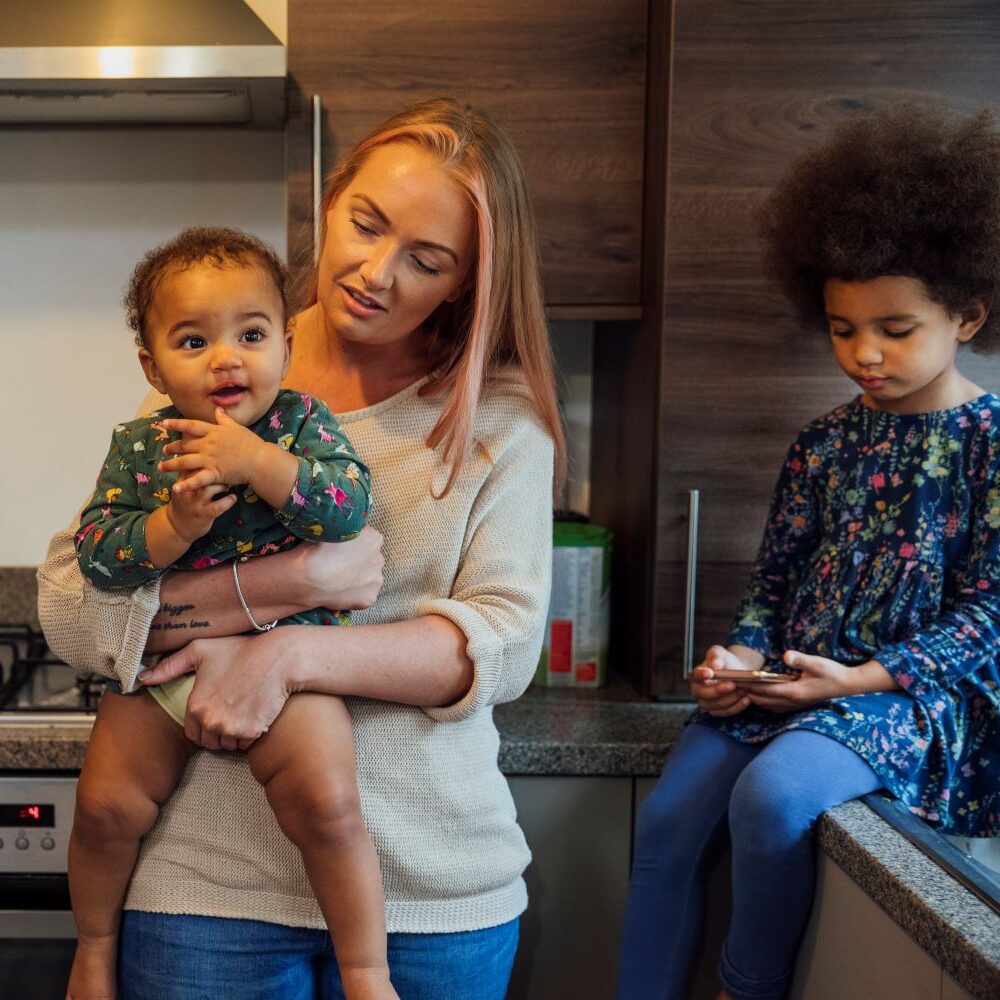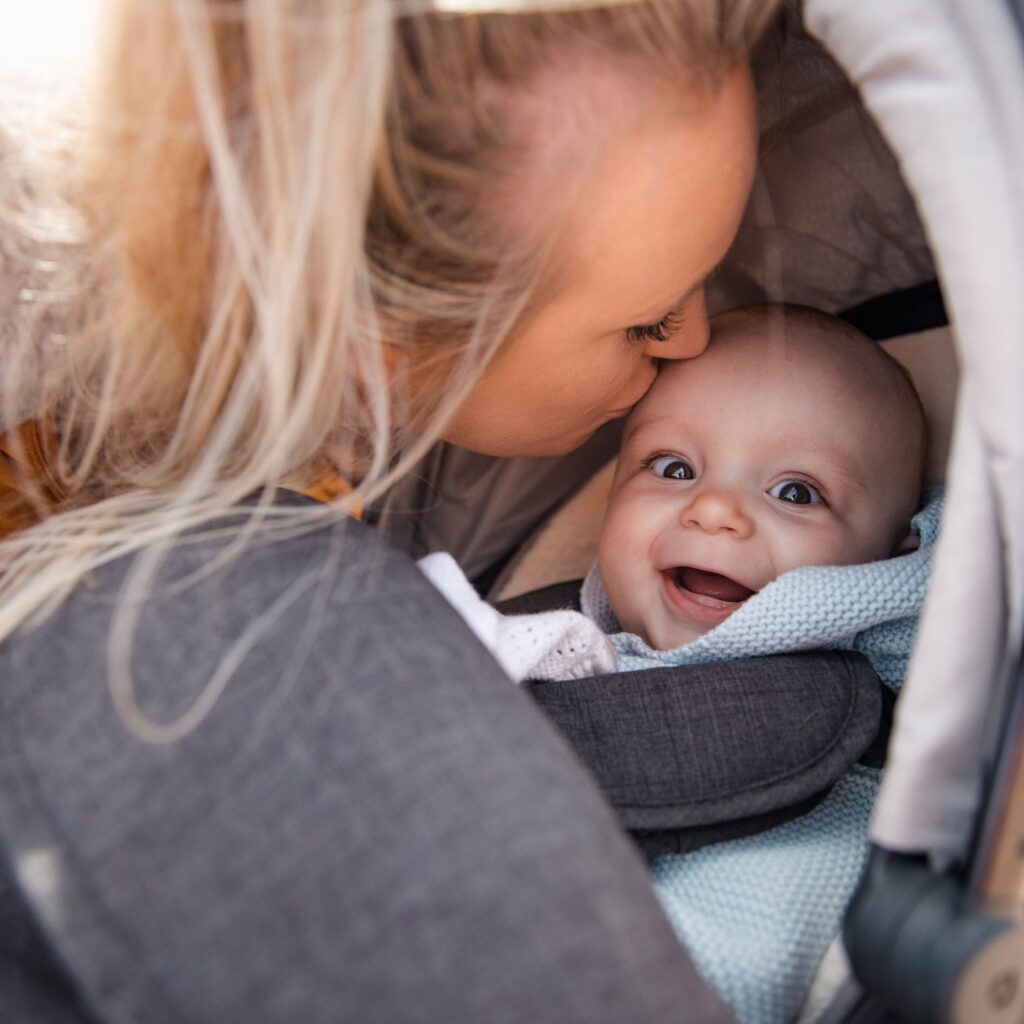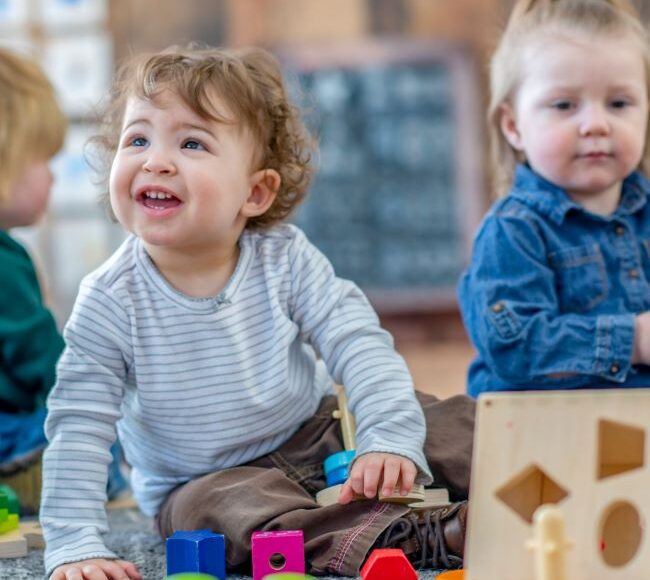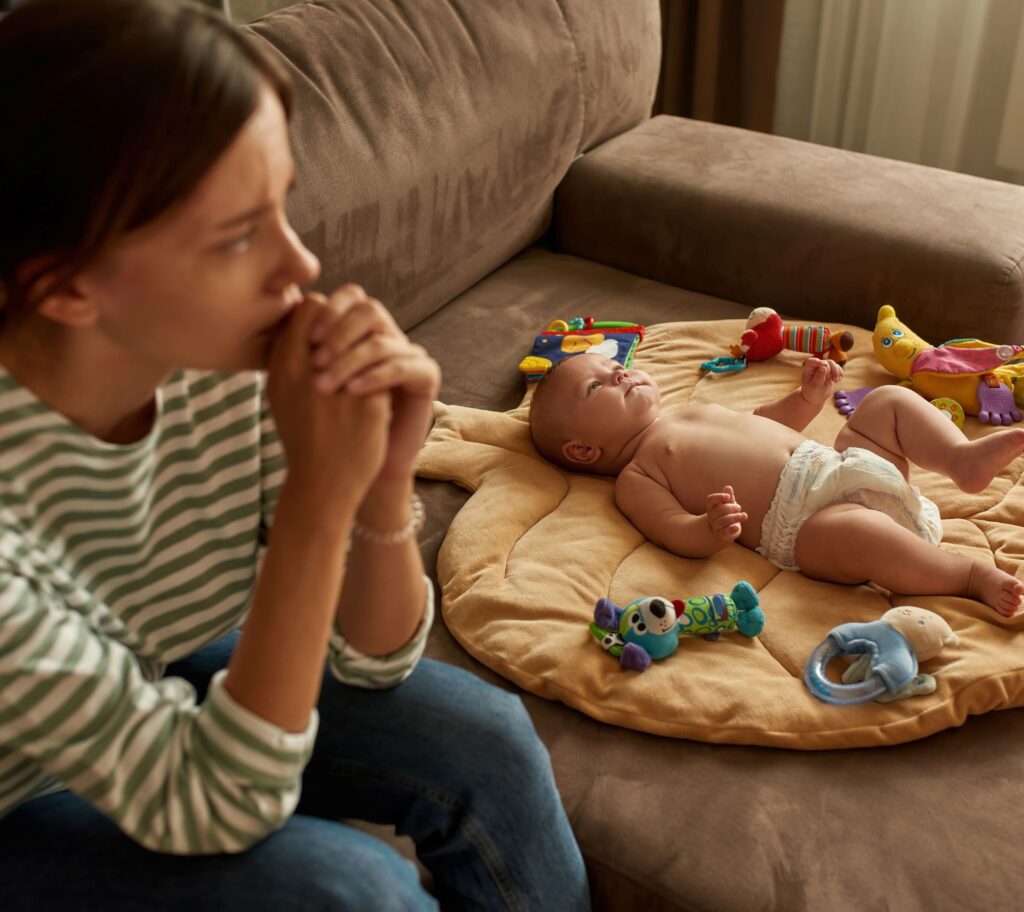We share advice and research on early years developmental milestones and suitable play-based learning activities for babies in their first year.
The first year of our children’s lives is a period of rapid development and change, with children’s cognitive abilities developing faster during the first five years than they will at any other point in their lives. These various stages are known as developmental milestones – and while every child is different, they can be a useful guide for new parents.
Here we do a deep dive into what occurs throughout this time, as we work with our partner Fisher-Price™ Play Lab to give you the low down on the developmental milestones during our children’s vital first year and tell you how to adapt some of our activities for pre-schoolers.
0-3 Months
- During this time children begin to return emotions and smiles and hold eye contact
- They’ll also lift their head, extend their legs and briefly grasp objects
- Babies can look at objects, listen to sounds and recognise smells
How to play
Give your little one objects for watching, about 8-10 inches from their eyes. Choose items with different textures and shapes for babies to feel and put them within reach so they can swat with their hands and feet.
For example, you can take inspiration from our junk modelling activities for pre-schoolers and begin to collect a “library” of sensory items so that we can give our children as varied an experience as possible and develop their understanding of the world. In our settings, we often put out different sensory materials for children to experience – things that are see-through, shiny and crinkly; things that bang or thump or things that are rigid or delicate.
3-6 Months
- Playing babies start giggling around this time and start imitating facial expressions, sounds and actions
- Little ones can also turn their heads in all directions and begin to roll over
- They also like feeling different textures and love to examine objects too
How to play
Play peek-a-boo, or use moving objects paired with sounds and/or lights. Choose a variety of textured materials and look for toys and items with high contrast, bright colours. As the ability to look around and roll over develops this is the perfect time to inspire children’s love of nature as, at this age, just being out in the garden is hugely stimulating and, in fact, simply taking them for a walk in a pram with the hood down is an education.
If you take them out to the garden they’re feeling the grass, and the breeze, and hearing the wind… don’t underestimate all the wonderful learning that’s going on.
Music is also hugely therapeutic for children and adults alike, singing helps to develop language and music produces “happy hormones”. We always have rattles, bells and shakers about in our groups…If you’re on a budget or simply want to make the most of recyclable materials why not try repurposing an old bottle and some rice to make a handy shaker? Don’t worry if this seems early for introducing children to music as evidence shows that children can hear music in the womb… So this is the activity they’re most familiar with!
6-9 months
- Around this time, they start to recognise family members and may throw kisses to familiar people
- They also begin to clap their hands and sit up without any support
- At this age children like repetition, and can follow one-step instructions such as smiling or waving
How to play
Try objects that move such as balls or toys with wheels. Babies also love pictures of objects or people in books, or colourful patterns. They love exploring on their own, pushing buttons, pulling objects and touching different textures.
They love exploring on their own, pushing buttons, pulling objects and touching different textures.
As children can sit up without support during this period this is also the perfect time to introduce something else inspired by the food activities we developed for pre-schoolers that requires independent sitting: making up edible paints using soya yoghurt and food colouring.
Once you have mixed these ingredients up simply put a large piece of paper on the ground and place blobs of it around for them to paint with, helping to develop their skills in expressive art and design and also, most likely, covering themselves from head to toe! Don’t be discouraged by the mess though as, particularly when engaging with other children, this is great for hitting all early years milestones and is also, from our staff’s personal experience, one of the activities that generates the most squeals of delight and communication between children.
9-12 months
- Children start to play games such as hide and seek or peek-a-boo
- They’ll begin to crawl, cruising along furniture and turning the pages of a book
- They’ll be able to point to named objects and understand simple commands
How to play
Try busy activities and toys with lots to explore, that allow and encourage little ones to sit up, cruise, and start walking. Items that encourage crawling, such as balls and things that move are also ideal at this stage, as are toys that encourage early role play, hide-and-seek games, and games of give and take.
You can also take some inspiration from our food activities for pre-school children here and do a bit of roleplay around hosting a tea party. If you enthusiastically drink from plastic cups they will copy you… but they might splash it about a bit! Just remember to keep talking to them throughout to help develop their communication and language.
And remember, some babies may reach some developmental milestones earlier or later than others. Developmental milestones are a useful tool to help check your baby is on track, and to give parents an idea of what kinds of play and learning your baby will enjoy most. If you have any concerns about your child’s development speak to your health visitor or GP.

Call, text, email or web chat FamilyLine
If you’re feeling overwhelmed, worried or upset about any aspect of your family life, FamilyLine is here for you. We offer free emotional support and guidance on family relationships, conflict, parenting, caring, financial worries and more.
Contact FamilyLine



